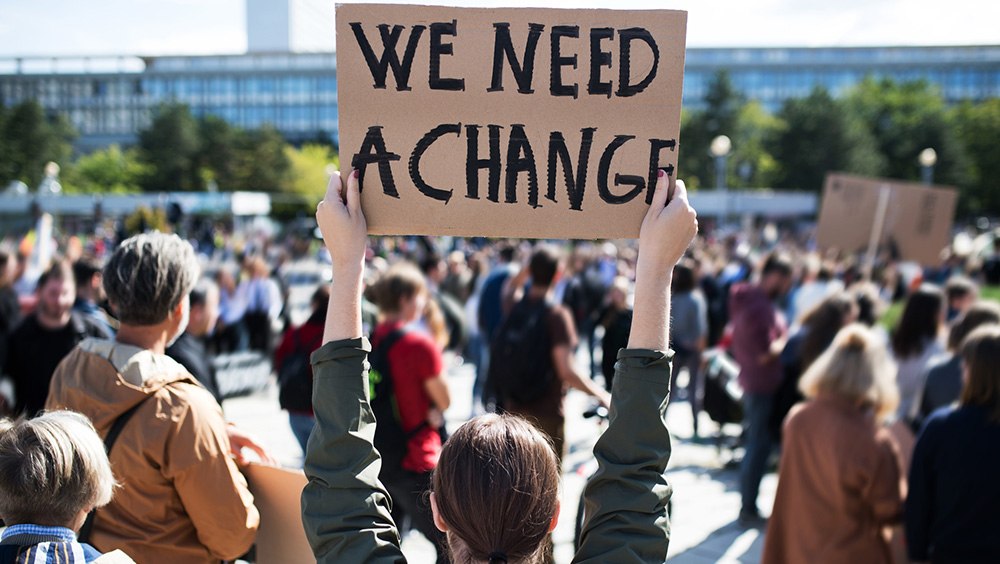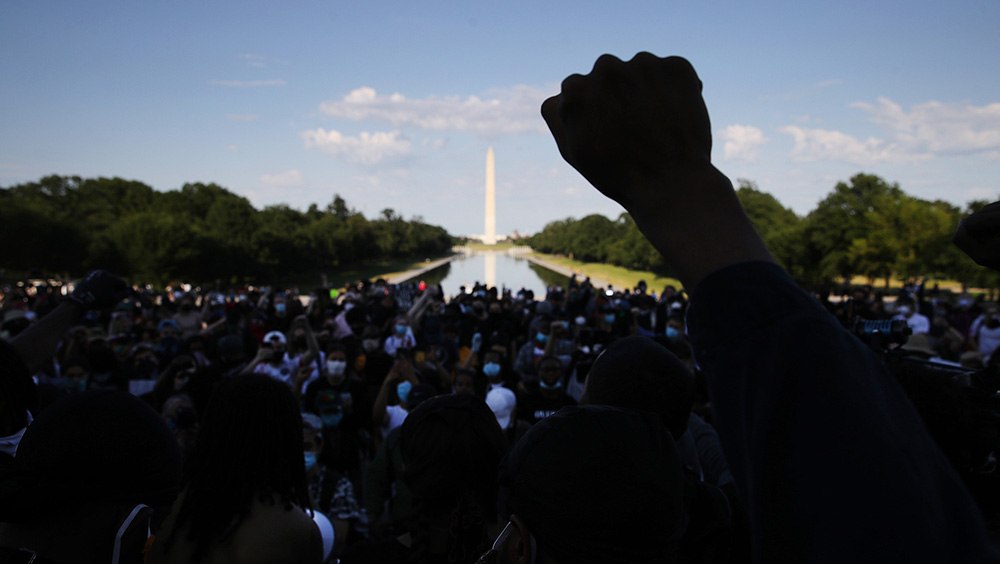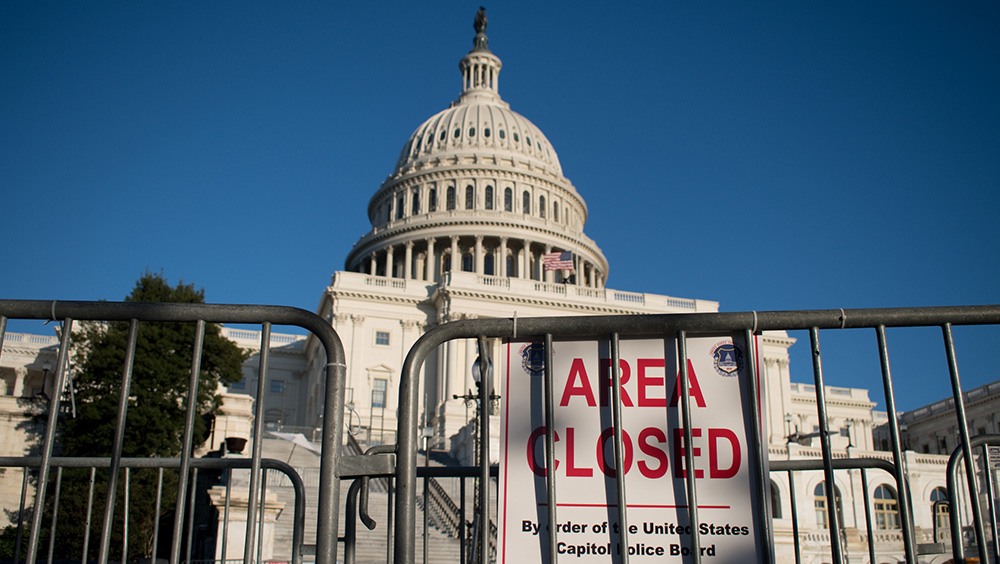Can You Protest on Public Property? The First Amendment Guide

While the First Amendment does not literally mention the right to public protest, it is expressed in the rights to free speech, to peaceably assemble and to petition the government for change.
The Supreme Court in De Jonge v. Oregon (1937) declared that the right of peaceful assembly is “equally fundamental” to a free society as freedom of speech. Freedom of assembly and the right to protest are time-honored American traditions.
Women of the 1910s marched on Washington, D.C., and other cities around the country, seeking the right to vote. In the 1960s, civil rights protestors used mass protests and assemblies to expose the evils of segregation and racism. More recently, people marched for and against abortion rights, access to guns and environmental causes.
Can you protest on government property?
Many of these protests took place on public property. You may sometimes hear the term “government property” used as well because these are areas that might be considered owned, controlled or maintained by the government. But it is important to understand they are not just limited to government buildings or national parks, where you need some kind of official permission to enter. Whether they are called “public property” or “government property” in these situations, the key thing to understand is these are not places owned by private people or private business.
For example, the historic March on Washington for Jobs and Freedom took place on the National Mall. There, Dr. Martin Luther King Jr. delivered his “I Have a Dream” speech.
But protesters do not have equal access to all public property. Current law identifies three types of public space: traditional public forums, designated public forums and nonpublic forums.
These levels apply the same at all levels of government — local, state and federal. Or stated another way, the public forum doctrine applies at all levels of government.
Public property where protest is most permitted
Most often, protest takes place on a type of public property known as a traditional public forum, such as public sidewalks and parks like the National Mall. These public sidewalks and parks are types of government property that traditionally have been available to the public for expressive purposes. Thus, they are the places where public protests most often take place.

Public property where protest is somewhat permitted
Protestors also often can protest in a second type of public forum, known as a designated public forum. This is a type of government property that is not a traditional public forum, but the government by policy or practice has opened it for public use.
Some public streets are considered designated public forums, as are public event spaces, like state fairs, and areas in front of government buildings, such as part of the plaza in front of the Supreme Court of the United States.
It is not easy for the government to restrict a protest in either a traditional or a designated public forum. The government must demonstrate a “compelling need” for limiting the protest, such as a threat to public safety. Even groups with hateful views have the right to protest on public property. After all, the First Amendment protects “freedom for the thought that we hate,” as Justice Oliver Wendell Holmes once said.
While people have the right to protest publicly in traditional and designated public fora, this right is not unlimited. For larger public protests in particular, the government can require people to apply for a permit to conduct a large-scale public protest or mass demonstration.
Government officials must be neutral in permit decisions. They may not selectively approve certain groups who apply for a permit and then reject other groups. This might amount to viewpoint discrimination, when the government favors or disfavors certain viewpoints or ideas. This is forbidden under First Amendment law.
Public property where protest is least permitted
The government has greater control over protests in places where large scale events generally are not allowed. These are most often government buildings or the area right in front of those buildings that are only used for entry and exit (and often viewed as part of the building premises itself). Because the protest is only occurring with the permission of the government, it’s easier to restrict the activities. The government must only show a reasonable need for the restriction and that it applies to everyone.

In what other ways can protest on public property be limited?
People do not have an unlimited right to protest on public property at any hour of the day or night.
Government officials can limit the time, the place and the manner of speech in any public place. For instance, they can say protesters can’t march at 3 a.m. in a residential neighborhood chanting through megaphones.
The government could also require that large groups apply for a permit before marching on a busy street. Otherwise, the large public protest could disrupt traffic. In this case, the government could limit the march to certain hours.
How has protesting on public property been important throughout U.S. history?
A powerful example of the right to public protest occurred in Columbia, S.C., in March 1961. Nearly 200 African American students marched from a local church to the statehouse with “Down with Segregation” signs. They chanted hymns such as “We Shall Overcome.” Along the way, a lone white student joined them. He was Frederick Hart, who later became a famous sculptor.
At the statehouse a crowd gathered across the street, many of whom opposed the civil rights protestors. Officials arrested most of the Black students and charged them with breach of the peace. The arrested students took their case to the U.S. Supreme Court, where they won. Writing for the court in Edwards v. South Carolina (1963), Justice Potter Stewart said that the actions of the student protesters represented the essence of the First Amendment freedoms of assembly and petition.
The First Amendment absolutely protects peaceful protest. It was crucial to the success of the Civil Rights Movement. As Dr. King wrote in “Letter from Birmingham Jail,” protest was civil rights activists’ way of “laying our case before the conscience of the local and national community.”
David Hudson is a First Amendment fellow with the Freedom Forum.
Why Government Officials Don’t Have to Use Bible for Oath of Office
Related Content

